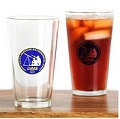Girl Scout
WHAT WE CAN PROVIDE FOR THE GIRL SCOUT PROGRAMS - LVAAS SUPPORT IN RED
Sky Search
1. Mapping the Skies
Learn how to use a star map. Obtain or make such a map for your stargazing location that adjusts to the time and season when you are observing stars. We can download current star charts and provide these to the girls. We can also take them outside (weather permitting) to view what they learned about.
2. Constellations
Constellations are stars that appear to be in groups when looked at from Earth. If you were to travel in a spaceship, you would find that most stars that look close together are actually billions of miles apart. Learn to identify at least five of the constellations seen from Earth. Same as above - modified to find constellations
3. Direction, Please
Learn about the North Star and why it has been used for navigation throughout history. Help others locate the North Star. Use the North Star to find two constellations or asterisms (part of a constellation). Either through star charts and photos or by using the planetarium, we can show the girls how all the other stars (and constellations) circle around the north star.
4, Planets
Learn which of the nine planets are visible to the naked eye. Try to locate at least one of these during a stargazing adventure. If possible, use a telescope to help you to see better. Write down what you discover. Using star charts or computer simulation, we can identify what planets are visible - weather permitting we can go outside and try to find them.
5. Connect the Dots
Learn stories from two or more ancient cultures-such as Greek, Norse, American Indian, Pacific Islander, or Chinese-that were used to explain what was seen in the sky. We can provide some information on mythology of the constellations.
6. Tools of the Trade
Learn the parts of a telescope and how to use one. If possible, use a tracking telescope or look through telescopes with different magnifications.
OR
Visit a large observatory and learn what kinds of telescopes are used there. What do astronomers learn by using telescopes? We can open up the observatories (weather permitting), teach the scouts what the major pieces of the scopes are and how to adjust and use the scope. Time and weather permitting, we will allow them to observe an astronomical subject.
7. Time for the Moon
Learn more about the moon-its phases, age, names of features and then take a closer look. The best time to observe the moon is when the moon is partially lit, around the "quarter" phases of the moon. Use binoculars or a small telescope to help you see the valleys, ridges, mountain ranges, and craters on the moon. We have a great hands on to demonstrate phases of the moon. We also have a lot of good information on the moon, and it’s one of the easiest targets for younger kids to find with telescopes.
Space Exploration IP - LVAAS SUPPORT IN RED
Skill Builders
2. Visit a museum, planetarium, observatory or space center to learn about the history of space exploration, or visit the National Space and Aeronautics and Space Administration (NASA) site on the internet to find out about projects currently in progress. Make a file and develop a list of web sites for others to explore. We can offer a planetarium show for the scouts.
3. Learn more about the sun and the moon and their relationship to the earth. Do two of the following:
• Mark your calendar with the phases of the moon for a month.
• Learn to read an ocean tide chart.
• Make a poster illustrating why and how seasons change.
• Demonstrate what happens during a solar or lunar eclipse.
• Identify a tale or superstition about the sun or the moon. Discuss whether or not this is a valid or even measurable belief.
We have a hands on program to teach the phases of the moon and eclipses.
4. With a group, discuss “the case for space” addressing issues such as Who owns space? Who owns the moon? Who should fund space travel or research? What are priorities for research in space? What happens if we find other life in space? Come up with charts and posters depicting your questions and answers. We can have an open ended discussion to make the scouts think about this particular topic.
Technology
1. Find out about the capabilities of today’s telescopes. If possible, visit an observatory or a site on the World Wide Web to learn more about these telescopes. We can open up the observatories (weather permitting), teach the scouts what the major pieces of the scopes are and how to adjust and use the scope. Time and weather permitting, we will allow them to observe an astronomical subject.
Service Projects
3. Help Brownie and Junior Girl Scouts learn about space exploration. Do two of the following: Conduct a night-sky exploration, put on a play about life on a space station, tell a story abut a woman astronaut, including her training and achievements, or share stories from different cultures about the night sky. We could provide training to help the girls conduct a star party, or assist at one of LVAAS’s star parties - we could ‘assist’ during the star party - this would be a multi-night program.
Career Exploration
1. Check out at least two of the following careers and show how they are linked to the space program: biomedical engineering, meteorology, ceramics, chemistry, industrial engineering, materials science, metallurgy, optical engineering, physiology, and photography. We can provide a short discussion on astrophotography from one of our members.
Last Updated Friday, October 02 2009 @ 09:51 PM EDT
5,262 Hits

